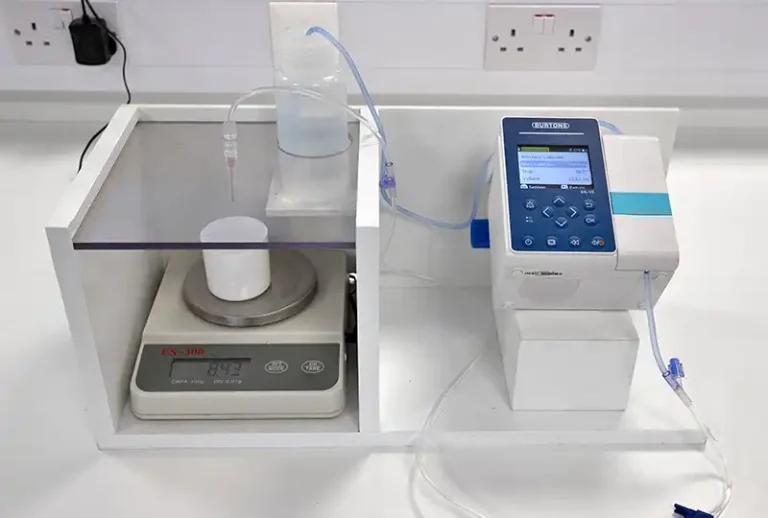Advertorial
12 September 2025
Infusion accuracy under the spotlight
Burtons’ study highlights the risks of poor calibration and incompatible giving sets

Burtons’ study highlights the risks of poor calibration and incompatible giving sets
Precision in fluid therapy can mean the difference between recovery and complications. Yet, as Burtons Veterinary Equipment highlights in its latest in-house study, many practices may be putting patient safety at risk by using incompatible giving sets or poorly calibrated infusion pumps.
To explore just how significant the issue could be, Burtons technical experts carried out a controlled test, running multiple infusion pumps and giving sets under consistent conditions. The goal was clear: determine how much variation in performance can occur purely due to equipment choice and maintenance, or the lack of it.
In-house study highlights
- Conducted by Burtons’ service team, the internal audit measured multiple infusion pumps of varying conditions, paired with multiple giving‑set brands under controlled conditions
- Result: up to 20% variance in fluid delivery between compatible and incompatible tubing, even when using the identical pump model.
- Study noted that “Calibration and compatible giving sets are not optional, they are critical to safe, precise patient care,” quoting Grant Kayes, Burtons service director
The findings revealed stark discrepancies. Even when using the same pump model, delivered volumes varied noticeably.
As the study shows, “The lowest amount observed was 8.8ml, 12% below the target… while the highest was 10.8ml, 8% above the target. That 2ml difference represents a 20% spread relative to the target volume.”
Such inconsistencies could have serious consequences, particularly for small or fragile patients. “Accurate fluid delivery from an infusion pump depends on two critical factors: regular calibration and the use of a reliable giving set,” explains Baz Weller, Burtons’ technical support and maintenance specialist. “Without routine calibration, discrepancies… can lead to significant dosing errors.”
The study also demonstrated that the physical properties of giving sets play a major role. Low-quality or ‘gravity-fed only’ sets showed deviations of up to ±40%, while high-quality, pump-compatible sets stayed within a ±2% tolerance. “The giving set used is also as important… If you want accurate infusion quantities, you need to find the right set and ensure the pump you put it in is set up for it… Using an unsuitable gravity set can damage your pump… In the end, it will cost you more in repairs,” adds Mr Weller.
Grant Kayes, Burtons service director, summarises the message: “Routine servicing and calibration of infusion devices is essential for maintaining device accuracy… ultimately safeguarding patient safety.”
Consistent calibration and the correct choice of giving set are not optional extras; they’re essential to delivering high-quality veterinary care. For full test results and detailed data charts, read the full study on the Burtons Veterinary Equipment website. There you’ll also find practical recommendations from ‘The Home of Veterinary Equipment’ on how to achieve infusion perfection in every drop.

